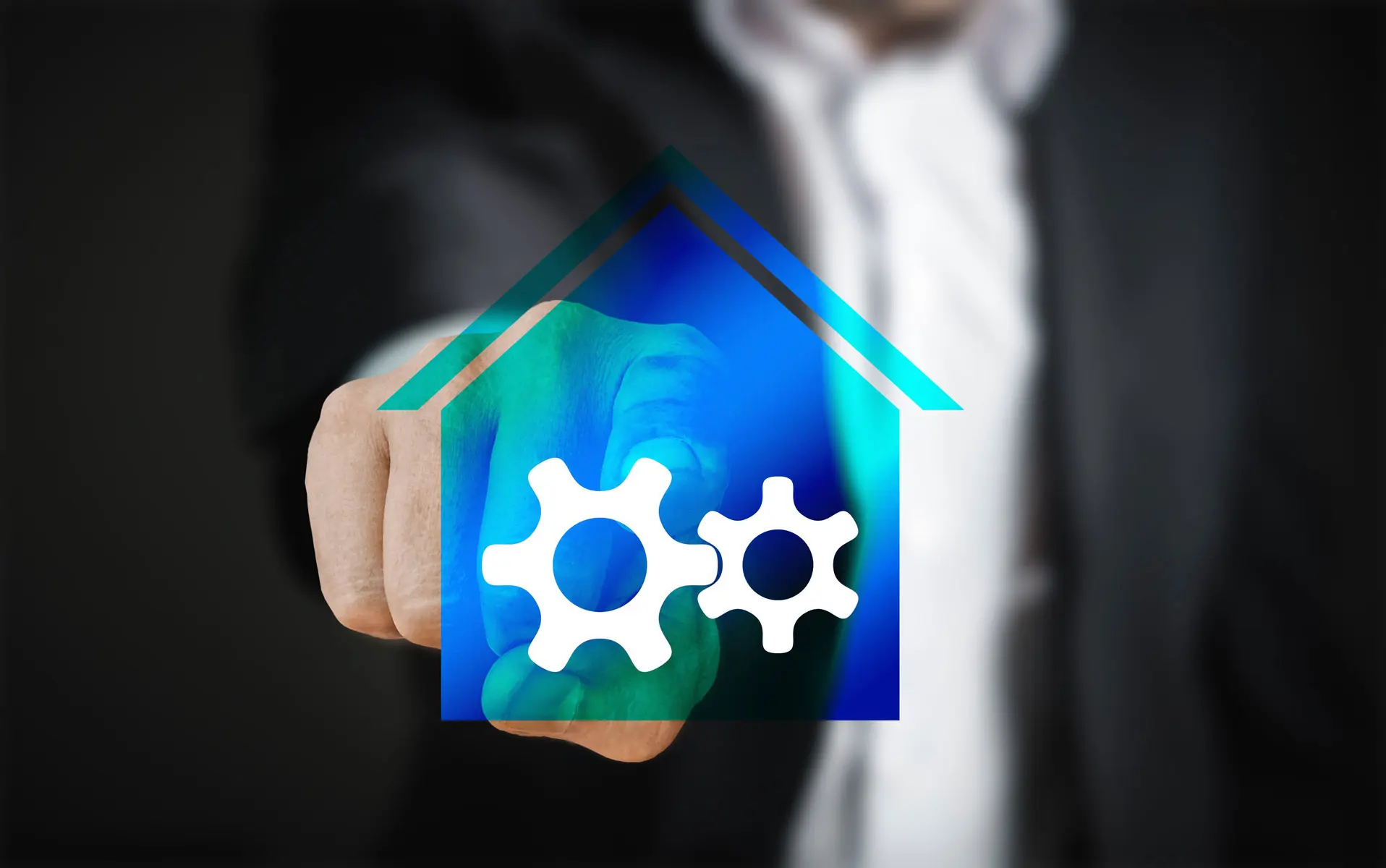Table of Contents
What is a Smart Home Hub?
The first step in building a smart home is choosing the right hub for your needs. A smart home hub serves as the command center for all your smart devices allowing you to control them from one centralized location. If we think of our smart homes as living entities, the smart home hub would be the brains that control everything. You want your smart home to be brand agnostic, meaning you don’t want to be locked into one ecosystem. You want to be able to buy a sensor from Manufacturer A and have it control a device from Manufacturer B.
A smart home hub typically includes a web interface for connecting and controlling devices and a mobile app for managing devices remotely. Some typical features of smart home hubs include the ability to schedule events, automate tasks, and receive alerts. A smart home hub can be either hardware-based such as Hubitat and SmartThings, or software-based, like Home Assistant and OpenHAB.
Hardware-Based Smart Home Hubs

The most common type of smart home hub is the hardware-based hub. These hubs are physical devices connected to your home’s Wi-Fi network. These hubs are the commercial brands you buy from the store. Hardware-based smart home hubs typically support a wide range of devices and protocols, making them a good choice for homeowners who want to connect various devices.
Software-Based Smart Home Hubs

Software-based smart home hubs are apps you download onto a mobile device, computer, or single-board computer like a Raspberry Pi. They offer many of the same features as hardware-based hubs but can often be more affordable. One downside of software-based hubs is they only support the Wi-Fi protocol out of the box. You will need to add a USB dongle if you want other protocols like ZigBee or Z-Wave. They also need more technical knowledge to set up and use than their hardware-based counterparts. However, they offer more flexibility and customization options.
Do I need a smart home Hub?

This question is one I get a lot. While the answer is technically no, I strongly disagree. You could go out and buy several cloud-based smart devices and hobble them together with a voice assistant, and it will work. However, these voice assistant automation rules engines are less robust than a standalone smart hub. They can perform basic automations consisting of one trigger and multiple actions. In addition, these voice assistants don’t have additional protocols like ZigBee and Z-Wave. Only specific models of Amazon Alexa have a ZigBee radio built in.
Having a dedicated smart hub provides many benefits over just a voice assistant. Their automation rules engine allows for more complex automations. You can have multiple triggers and actions, but you also get conditional logic, allowing automations to only run under certain conditions. For example, the smart thermostat will not turn on the air conditioning if a window is open.
Smart hubs also give you multiple protocols allowing you to be more flexible with your smart home devices. They also provide a way to connect these devices with Amazon Alexa, Google Assistant, and HomeKit. In addition, some of these platforms, like Hubita and Samsung SmartThings, allow you to create custom applications and drivers, leading to even more community-driven integrations.
Smart Home Hub Considerations

There are a few considerations you want to keep in mind when choosing a smart home hub. First, you’ll want to ensure that your chosen hub is compatible with the smart devices you own and plan to buy. Second, if you live with others, you must select a hub that supports multiple users. Last, compare the prices of the different hubs and choose the one that fits your budget.
What Smart Devices Do You Already Own?

Before deciding which smart home hub to buy, you must take inventory of your current smart devices. Knowing this will help you determine which hub is compatible with your devices and which features you need. Look around your house to see what smart devices you own. Chances are, you have at least a few smart devices, such as a smart TV, smart appliances, or a voice assistant. You can control all these devices with a smart home hub. In fact, if you have a Samsung smart TV or appliance, they may already have a Smartthings hub built in.
What Smart Devices Are You Planning to Use?
When deciding which smart home hub to buy, you must consider which smart devices you’re planning on buying. Knowing this will help you determine which hub is compatible with these devices. Once you’ve narrowed your options, it’s a good idea to read online reviews to understand better which hub is right for you.
Other Household Users – Wife Acceptance Factor (WAF)
One final thing to keep in mind when choosing a smart home hub, it’s essential to consider the needs of all users. For example, if you have a family, you’ll want to ensure that everyone can access and control the devices in your home. Additionally, you’ll want to consider the wife acceptance factor (WAF). WAF is important because you’ll want to ensure that your spouse is on board with using the smart home.
My wife only had one requirement for our smart home: everything must still work manually. She didn’t want to rely on smart home devices to do everything for us. While this may seem like a strange requirement, it’s not that uncommon. Many people want the convenience of smart home devices but don’t want to rely on them entirely.
Smart Home Hub Features

It is essential to compare each smart home hub’s features before deciding. Some hubs offer more features than others. For example, some hubs allow users to control devices with their voice, while others require a mobile app. In addition, some hubs offer features like integration with IFTTT and support for multiple users and many devices. Some standard features to look for include the following:
Automation Rule Engine
A good smart home hub will have a robust automation rules engine that can create complex automations. The automation rules engine is the framework that drives automations. Automations consist of triggers, conditions, and actions. Triggers are the events that cause automations to start, i.e., motion detected, or a door opened. An excellent smart hub will allow for multiple triggers. Conditions are the conditional logic that applies to automations to limit further when it runs. i.e., You have a trigger set that when the temperature goes above a certain point, the air conditioner turns on. Still, you could have a condition that won’t turn it on if a window is open. Finally, actions are just that, actions you want to take when an event is triggered, i.e., turn on the AC or light.
Not all home automation hubs are created equal. Some hubs have a basic rules engine, while others have a more complex one. For example, the Amazon Echo can perform basic automation consisting of one trigger, multiple actions, and no conditions. In contrast, Hubitat elevation has one of the best rules engines. In addition, it can have numerous triggers, conditions, and actions. Therefore, choosing a hub that fits your specific needs is essential.
Multiple Protocols
A good smart home hub should support multiple protocols to connect to various devices. The most popular protocols are Wi-Fi, Zigbee, and Z-Wave. Wi-Fi is a wireless protocol that has direct access to the Internet. Zigbee is a wireless mesh network protocol used by many smart home devices, including Philips Hue lights, Amazon Echo Plus, and Aqara. Z-Wave is another wireless mesh network protocol that many smart home devices use, including Zooz Z-Box and Ring. Some hubs have all three protocols, including the Samsung SmartThings and Hubitat Elevation. Ultimately the more protocols a smart hub supports, the more flexibility you’ll have when choosing smart devices.
Smart App
You will want to factor in the mobile app when deliberating which smart home hub is best for you. You’ll want a mobile app that is easy to use to control your smart home system remotely. Additionally, the app should have a robust set of features so you can make sure all your smart devices are connected and functioning correctly. It’s also helpful to have an app compatible with multiple operating systems to access it on any device.
Hub Modes
Another great feature a smart home hub offers is the ability to create preset modes. Modes are different states your hub can be in, which can dictate when and how automations run. For example, you can create a ‘night’ mode, and in your lighting automations, you could set the brightness to 20% so as not to blind you when going to the bathroom in the middle of the night. Additionally, an ‘away’ mode can be a condition for automations not to run.
Groups
Grouping your devices into different categories is one of the most powerful features of any smart home hub. It allows you to automate multiple devices at once, making it easier to control your entire home. For example, if you decide to set a movie night, you could create a group for all the lights in the living room and use the hub to set the lights to the desired dimness. Grouping also makes monitoring multiple devices more accessible, so you always know what’s happening in your home.
Scenes
Smart home hubs allow you to set up scenes – an automated sequence of events performed with a single command. For example, you could set up a “Good Morning” scene to turn on the lights, raise the blinds and turn on the coffee pot when you wake up. With the proper setup, you can save time and energy by having your home ready with just a single command. Furthermore, you can control all of these settings remotely via a smartphone, tablet, or computer, giving you unprecedented control over your home’s environment.
Voice Control
Smart home hubs are the latest must-have technology, and their features are becoming increasingly sophisticated. One of the most exciting features is voice control, which allows you to control your smart home with simple voice commands. Voice commands are as easy as connecting your hub with a popular virtual assistant such as Amazon’s Alexa, Google Home, and Apple’s Siri. In addition, it makes operating a smart home quick and easy, allowing you to focus on more critical tasks.
Advanced Scripting
Many hubs come with pre-installed apps and driver support making it easy for you to get up and running quickly. However, custom integrations are the key to making your smart home hub work for you. With the ability to create and install custom apps and drivers, you can extend the integrations your smart home hub can support. It opens up new possibilities for controlling your devices and securing your home.
Ease of Use
Finally, when looking for a smart home hub, you want one that is easy to use. You don’t want one that is complicated to set up or hard to use because you will get frustrated and give up. Instead, you want one that is intuitive and easy to navigate.
How Do I Choose the Right Smart Home Hub?

When choosing the right smart home hub, there is no one size fits all solution. Everyone’s home and lifestyle are different, so the best hub for your home might be different for your neighbor. Additionally, comparing the features and specs of other hubs can help you make an informed decision. Consider what you would like to be able to do with your hub and the features it will need to provide to complete those tasks. Furthermore, remember that the right hub is an investment, so make sure to get one that will meet your needs for the long term. Finally, doing research and reading reviews can help you narrow down your choices and find the hub that is the best fit for you.
Can I Choose More Than One Smart Hub?

Home automation technology has come a long way and can now be used to create a truly smart home. Home automation hubs are the gateway to modern living, allowing you to control your home from anywhere and at any time. You can even have multiple smart home hubs. For example, in my home, I use Hubitat and Home Assistant. Hubitat is my central hub, and I connect all my Z-wave and Zigbee devices to it. I use Home Assistant for any device, not nativity supported by Hubitat. Then in Home Assistant, I use the Hubitat integration to connect my Hubitat devices with Home Assistant. I would suggest keeping your hubs to a minimum. Every hub you connect introduces complexity and another point of failure.




